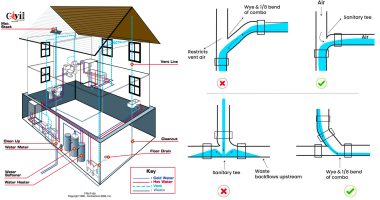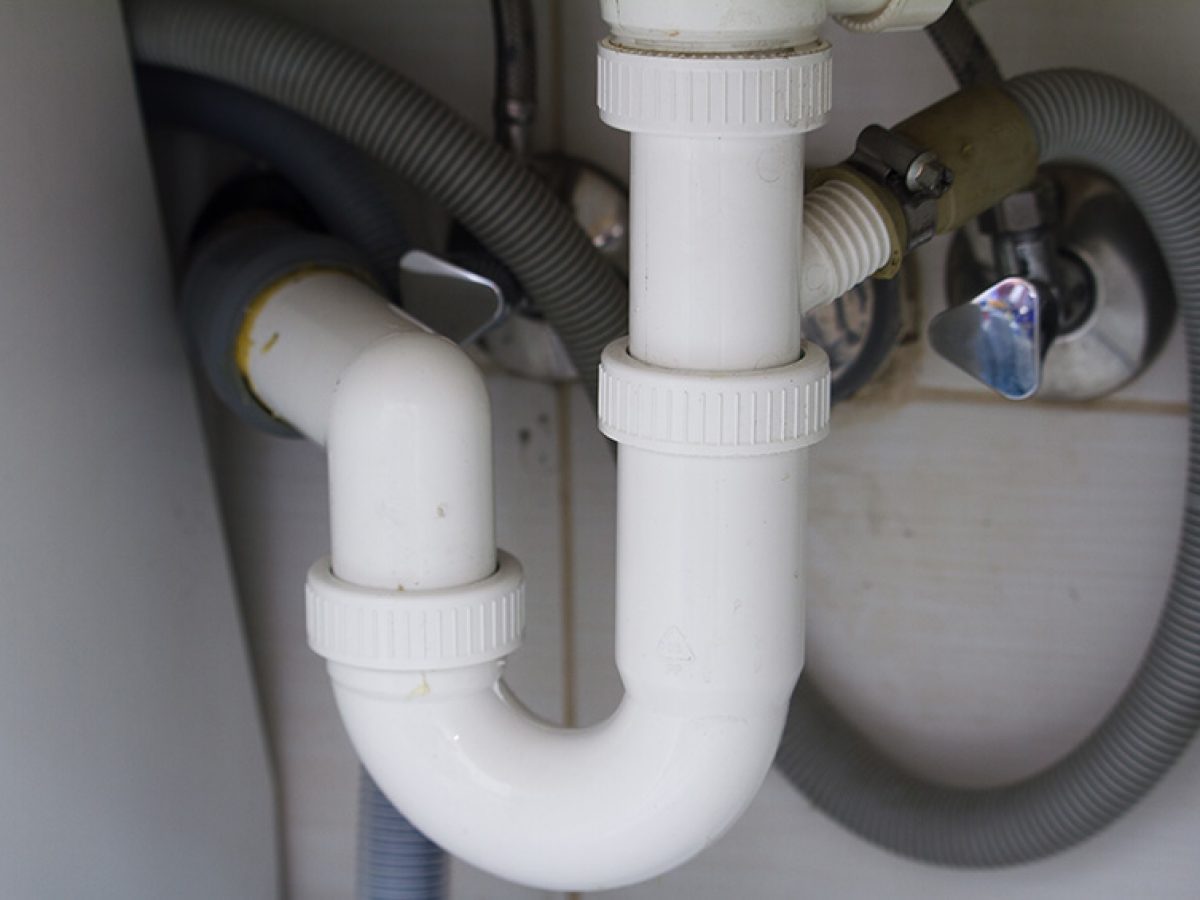On this page below you will discover additional very good facts involving Exploring Your Homes Plumbing Anatomy.

Understanding exactly how your home's pipes system functions is vital for every single homeowner. From providing tidy water for drinking, cooking, and showering to securely removing wastewater, a well-kept pipes system is critical for your family members's health and convenience. In this thorough guide, we'll check out the detailed network that makes up your home's plumbing and deal pointers on maintenance, upgrades, and dealing with typical concerns.
Intro
Your home's plumbing system is more than simply a network of pipes; it's a complicated system that guarantees you have accessibility to tidy water and efficient wastewater removal. Understanding its parts and just how they work together can help you avoid expensive fixings and make certain every little thing runs efficiently.
Basic Elements of a Pipes System
Pipelines and Tubes
At the heart of your pipes system are the pipes and tubing that carry water throughout your home. These can be made of different materials such as copper, PVC, or PEX, each with its advantages in regards to toughness and cost-effectiveness.
Components: Sinks, Toilets, Showers, and so on.
Components like sinks, toilets, showers, and bathtubs are where water is used in your home. Understanding how these fixtures connect to the plumbing system helps in diagnosing troubles and intending upgrades.
Shutoffs and Shut-off Factors
Shutoffs regulate the circulation of water in your plumbing system. Shut-off valves are essential during emergencies or when you require to make fixings, permitting you to separate parts of the system without interfering with water circulation to the whole home.
Water System System
Key Water Line
The primary water line connects your home to the community water supply or a private well. It's where water enters your home and is dispersed to different fixtures.
Water Meter and Pressure Regulator
The water meter actions your water use, while a stress regulator guarantees that water flows at a safe stress throughout your home's pipes system, stopping damage to pipes and components.
Cold Water vs. Warm water Lines
Comprehending the distinction between cold water lines, which provide water straight from the main, and hot water lines, which lug warmed water from the water heater, helps in repairing and preparing for upgrades.
Drain System
Drain Piping and Traps
Drain pipelines carry wastewater far from sinks, showers, and bathrooms to the drain or septic tank. Catches prevent sewage system gases from entering your home and additionally trap debris that can trigger blockages.
Ventilation Pipelines
Ventilation pipelines enable air into the water drainage system, stopping suction that might slow water drainage and trigger traps to vacant. Appropriate air flow is vital for maintaining the stability of your plumbing system.
Value of Appropriate Drain
Making sure appropriate drainage avoids backups and water damages. Regularly cleaning drains and maintaining catches can stop costly repair work and expand the life of your pipes system.
Water Heater
Types of Water Heaters
Hot water heater can be tankless or typical tank-style. Tankless heating systems warmth water as needed, while storage tanks store warmed water for instant use.
How Water Heaters Link to the Plumbing System
Understanding how water heaters connect to both the cold water supply and hot water distribution lines aids in detecting problems like insufficient hot water or leaks.
Maintenance Tips for Water Heaters
Routinely purging your hot water heater to remove debris, inspecting the temperature level setups, and inspecting for leakages can prolong its lifespan and boost power effectiveness.
Usual Plumbing Issues
Leakages and Their Causes
Leaks can take place due to maturing pipes, loose installations, or high water pressure. Attending to leaks immediately protects against water damages and mold development.
Obstructions and Clogs
Blockages in drains pipes and toilets are commonly caused by purging non-flushable items or an accumulation of oil and hair. Utilizing drainpipe screens and bearing in mind what goes down your drains can protect against clogs.
Indications of Pipes Troubles to Watch For
Low tide stress, slow drains pipes, foul odors, or abnormally high water bills are indications of possible pipes troubles that must be attended to quickly.
Pipes Upkeep Tips
Regular Inspections and Checks
Arrange yearly pipes examinations to capture concerns early. Try to find indications of leaks, rust, or mineral accumulation in taps and showerheads.
Do It Yourself Maintenance Tasks
Simple jobs like cleansing faucet aerators, looking for bathroom leaks making use of color tablet computers, or protecting subjected pipelines in cool environments can protect against major pipes problems.
When to Call a Specialist Plumbing Professional
Know when a pipes problem needs specialist experience. Trying complicated fixings without proper expertise can bring about even more damage and greater fixing prices.
Updating Your Pipes System
Factors for Updating
Updating to water-efficient fixtures or replacing old pipes can enhance water quality, decrease water expenses, and enhance the value of your home.
Modern Plumbing Technologies and Their Benefits
Discover modern technologies like clever leak detectors, water-saving commodes, and energy-efficient water heaters that can conserve cash and lower environmental impact.
Price Factors To Consider and ROI
Determine the in advance costs versus long-term cost savings when considering plumbing upgrades. Numerous upgrades spend for themselves through reduced utility bills and fewer repair work.
Environmental Influence and Preservation
Water-Saving Fixtures and Devices
Mounting low-flow faucets, showerheads, and toilets can dramatically lower water use without giving up efficiency.
Tips for Decreasing Water Usage
Basic behaviors like dealing with leaks promptly, taking shorter showers, and running full tons of laundry and dishes can save water and lower your energy bills.
Eco-Friendly Pipes Options
Think about sustainable plumbing materials like bamboo for flooring, which is durable and environment-friendly, or recycled glass for counter tops.
Emergency Preparedness
Actions to Take Throughout a Pipes Emergency situation
Know where your shut-off valves lie and exactly how to shut off the water system in case of a burst pipeline or major leak.
Importance of Having Emergency Situation Get In Touches With Useful
Keep contact details for neighborhood plumbers or emergency situation solutions conveniently available for quick response throughout a pipes crisis.
Do It Yourself Emergency Fixes (When Applicable).
Temporary repairs like utilizing duct tape to spot a leaking pipeline or putting a bucket under a dripping tap can lessen damage until a professional plumbing professional gets here.
Final thought.
Comprehending the anatomy of your home's pipes system empowers you to preserve it effectively, saving money and time on repairs. By complying with regular upkeep routines and staying notified about contemporary pipes modern technologies, you can guarantee your plumbing system runs successfully for years to find.
HOW YOUR PLUMBING SYSTEM WORKS
Which Pipes Do What?
Blue lines = fresh water supply entering the building
Red lines = hot water supply entering the building
Grey lines = pipes carrying waste away from the building and venting pipes carrying gases away from the building (through the roof)
YOUR MAIN PLUMBING SYSTEMS
There are two main plumbing systems that support your home s basic plumbing needs one that brings clean water into your home, and one that sends dirty water away from your home. Connected to the toilet, bath, shower, and other faucets in your home, these two systems keep your water flowing in the right directions.
ACCESSING FRESH WATER
Fresh and clean water is brought into your home through the main water supply line . Filtered through one pipe, this water is pressured to flow into the various fixtures in your home at any given time.
This water can be sourced from a well located on your property, a pond or river (mostly cottages), or, as in most cases, from the city s municipal water treatment centre. However, it is important to note that water that is untreated, such as the water siphoned from ponds or rivers, may not be safe to drink. Personal water supplies always need to be treated for hardness and contaminants before consumed.
MUNICIPAL WATER SUPPLIES
Improve taste and odour
Remove sediment
Eliminate hardness
Reduce chlorine
COLD WATER SUPPLY VS. HOT WATER SUPPLY
Cold water flows into your home or building through the service line, which then distributes hot or cold water to your fixtures. This line is most commonly run through a central column that runs floor to floor. Hot water runs in short and straight pipes as the longer the pipeline, the more heat that will be lost in the transfer. Having shorter pipes also allows residents to access hot water more quickly.
WASTE WATER SYSTEM
Your wastewater system is divided into two parts pipes that send wastewater away from your home and venting pipes that send sewer gas away from your home. Sewage water travels through pipes that flush the water and waste towards local sewers that are operated and managed by your city or town. Most sewer systems rely on gravity to move the wastewater to where it needs to go.
The further away from your toilet or sink, the larger wastewater pipes become. This allows for waste to be disposed of from various parts of your home or business at once without pipe blockages. The angle and flow of these pipes are also essential for keeping your waste pipes clear of build up.
https://harrisplumbing.ca/how-your-home-plumbing-system-works/

HOW YOUR PLUMBING SYSTEM WORKS
Which Pipes Do What?
YOUR MAIN PLUMBING SYSTEMS
There are two main plumbing systems that support your home s basic plumbing needs one that brings clean water into your home, and one that sends dirty water away from your home. Connected to the toilet, bath, shower, and other faucets in your home, these two systems keep your water flowing in the right directions.
ACCESSING FRESH WATER
Fresh and clean water is brought into your home through the main water supply line . Filtered through one pipe, this water is pressured to flow into the various fixtures in your home at any given time.
This water can be sourced from a well located on your property, a pond or river (mostly cottages), or, as in most cases, from the city s municipal water treatment centre. However, it is important to note that water that is untreated, such as the water siphoned from ponds or rivers, may not be safe to drink. Personal water supplies always need to be treated for hardness and contaminants before consumed.
MUNICIPAL WATER SUPPLIES
COLD WATER SUPPLY VS. HOT WATER SUPPLY
Cold water flows into your home or building through the service line, which then distributes hot or cold water to your fixtures. This line is most commonly run through a central column that runs floor to floor. Hot water runs in short and straight pipes as the longer the pipeline, the more heat that will be lost in the transfer. Having shorter pipes also allows residents to access hot water more quickly.
WASTE WATER SYSTEM
Your wastewater system is divided into two parts pipes that send wastewater away from your home and venting pipes that send sewer gas away from your home. Sewage water travels through pipes that flush the water and waste towards local sewers that are operated and managed by your city or town. Most sewer systems rely on gravity to move the wastewater to where it needs to go.
The further away from your toilet or sink, the larger wastewater pipes become. This allows for waste to be disposed of from various parts of your home or business at once without pipe blockages. The angle and flow of these pipes are also essential for keeping your waste pipes clear of build up.
https://harrisplumbing.ca/how-your-home-plumbing-system-works/
Do you like reading about The Inner Workings of Your Home's Plumbing? Write feedback down the page. We would be delighted to know your responses about this piece. We are looking forward to see you back again soon. Sharing is good. Who knows, you may very well be helping someone out. Bless you for your time. Revisit us soon.
Schedule Now!